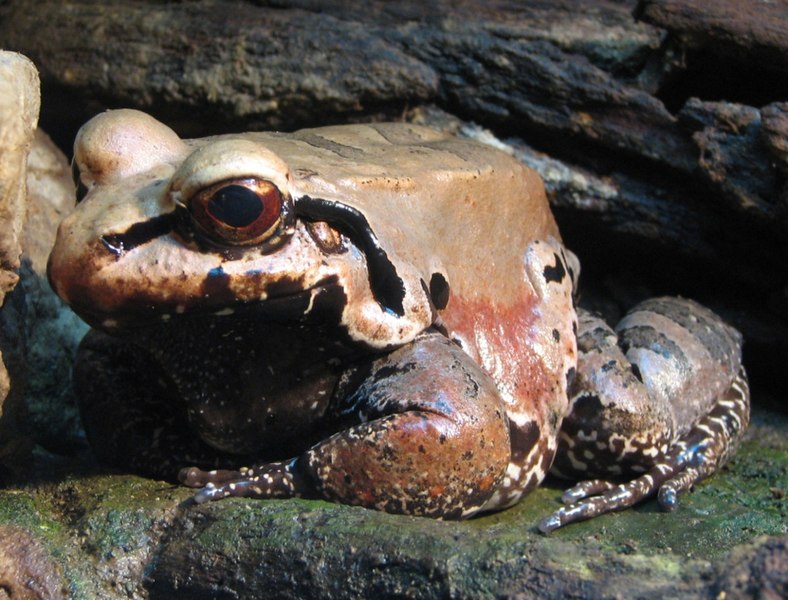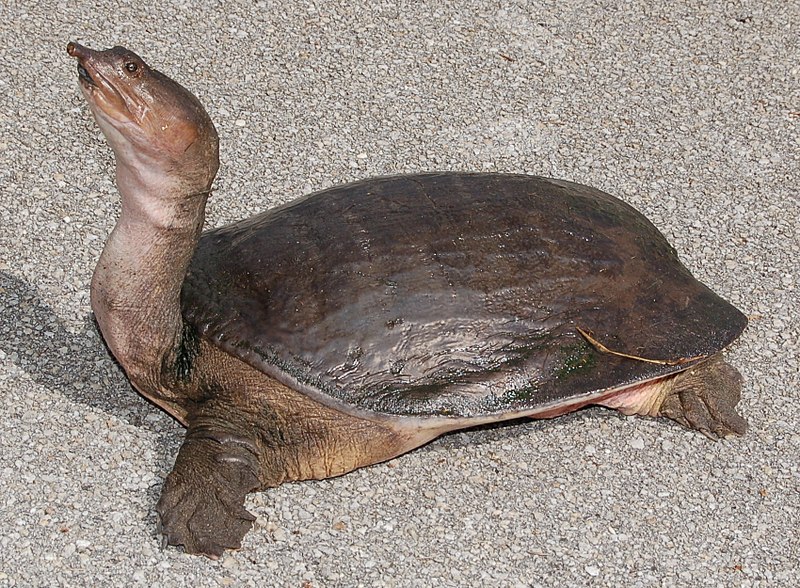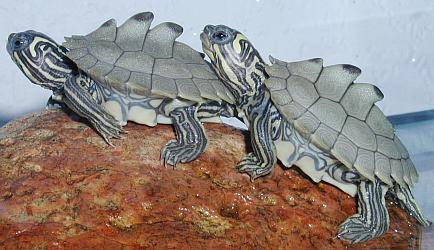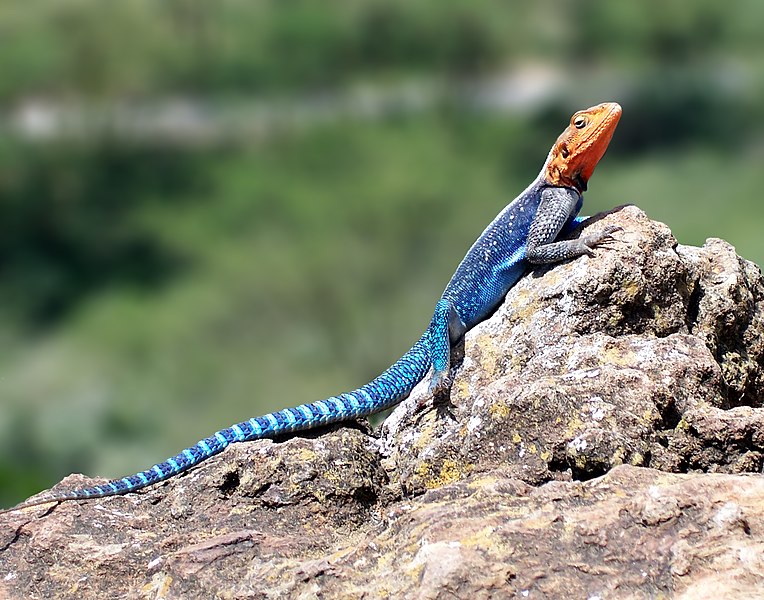In the late 1980’s I was privileged to breed the now rarely-seen Smoky Jungle Frog, Leptodactylus pentadactylus, a large (8 inch snout-vent length) Latin American native that constructs foam nests on  land. In the wild, rain washes the tadpoles into a nearby pool, where they develop in normal frog fashion…following suit, I successfully reared a number in water. I subsequently learned that some frog nests are placed far from the water’s edge, and that the tadpoles therein develop entirely on land. But what did they eat…the nest’s foam, perhaps? There were theories, but no answers.
land. In the wild, rain washes the tadpoles into a nearby pool, where they develop in normal frog fashion…following suit, I successfully reared a number in water. I subsequently learned that some frog nests are placed far from the water’s edge, and that the tadpoles therein develop entirely on land. But what did they eat…the nest’s foam, perhaps? There were theories, but no answers.
Subterranean Frog Nests
Herpetologists working with the closely related Mountain Chicken Frog (L. fallax) at the Durrell Wildlife Conservation Trust have recently solved the riddle – and captured the bizarre event on film. Mountain Chicken Frogs, highly endangered and limited to Dominica, St. Kits, Martinique and a few neighboring islands, lay their eggs in foam nests underground, and the tadpoles develop without ever seeing water.
The startling footage taken by the researchers, shows scores of tadpoles gorging on unfertilized eggs produced by their mother. In sharp contrast to certain more “civilized” oophagus (egg-eating) poison frog tadpoles, the chicken frog larvae do not wait until the eggs are actually deposited, but rather swarm about the female’s cloaca, eating ravenously as the eggs emerge. It’s quite a scene!
A Taxing Time for Mom
 Subsequent research has revealed that the harried mother uses her rear legs in an attempt to re-distribute the unusual food, and perhaps to give all of her gluttonous progeny a chance to feed. She has her work cut out for her…the 25 to 50 tadpoles that she rears require 10,000 to 25,000 unfertilized eggs to see them through to metamorphosis!
Subsequent research has revealed that the harried mother uses her rear legs in an attempt to re-distribute the unusual food, and perhaps to give all of her gluttonous progeny a chance to feed. She has her work cut out for her…the 25 to 50 tadpoles that she rears require 10,000 to 25,000 unfertilized eggs to see them through to metamorphosis!
Further Reading
Frogs break all the rules when it comes to reproductive behavior, constantly surprising even the most seasoned herpetologists. To read about tadpoles that “petition” their mother for food, please see my article Begging Behavior Among Strawberry Poison Frog Tadpoles.
Smoky Jungle Frog image referenced from wikipedia and originally posted by Ltshears
Leptodactylus fallax image referenced from wikipedia and originally posted by TimVickers
 That Reptile Blog – Reptile, Amphibian and Exotic Pet Care and Information
That Reptile Blog – Reptile, Amphibian and Exotic Pet Care and Information

 Herpetologists and experienced turtle enthusiasts consider the wood turtle to be among the most intelligent of the turtles – in lab tests, they consistently scoring higher than other species on maze and reward-association tests. In my experience, captives exhibit a degree of curiosity and problem-solving abilities not evident in other turtles.
Herpetologists and experienced turtle enthusiasts consider the wood turtle to be among the most intelligent of the turtles – in lab tests, they consistently scoring higher than other species on maze and reward-association tests. In my experience, captives exhibit a degree of curiosity and problem-solving abilities not evident in other turtles. website. More important (infinitely more!) than my connection to NYTTS is their long standing relationship with legendary turtle biologist Peter Pritchard, who often speaks at the group’s day-long annual seminars. Rhom Whittaker, Mike Klemens, Roger Wood, Indraneil Das and numerous other notables have also participated in NYTTS sponsored programs.
website. More important (infinitely more!) than my connection to NYTTS is their long standing relationship with legendary turtle biologist Peter Pritchard, who often speaks at the group’s day-long annual seminars. Rhom Whittaker, Mike Klemens, Roger Wood, Indraneil Das and numerous other notables have also participated in NYTTS sponsored programs. conservation and natural history. Noted author and herpetologist Andy Highfield directs the organization, which is utilized by professionals and hobbyists alike.
conservation and natural history. Noted author and herpetologist Andy Highfield directs the organization, which is utilized by professionals and hobbyists alike. number of ways to participate in such. In addition to dozens of informative articles, one may also find photographs and even recordings of tortoise vocalizations on this most useful web site.
number of ways to participate in such. In addition to dozens of informative articles, one may also find photographs and even recordings of tortoise vocalizations on this most useful web site. Please see
Please see 